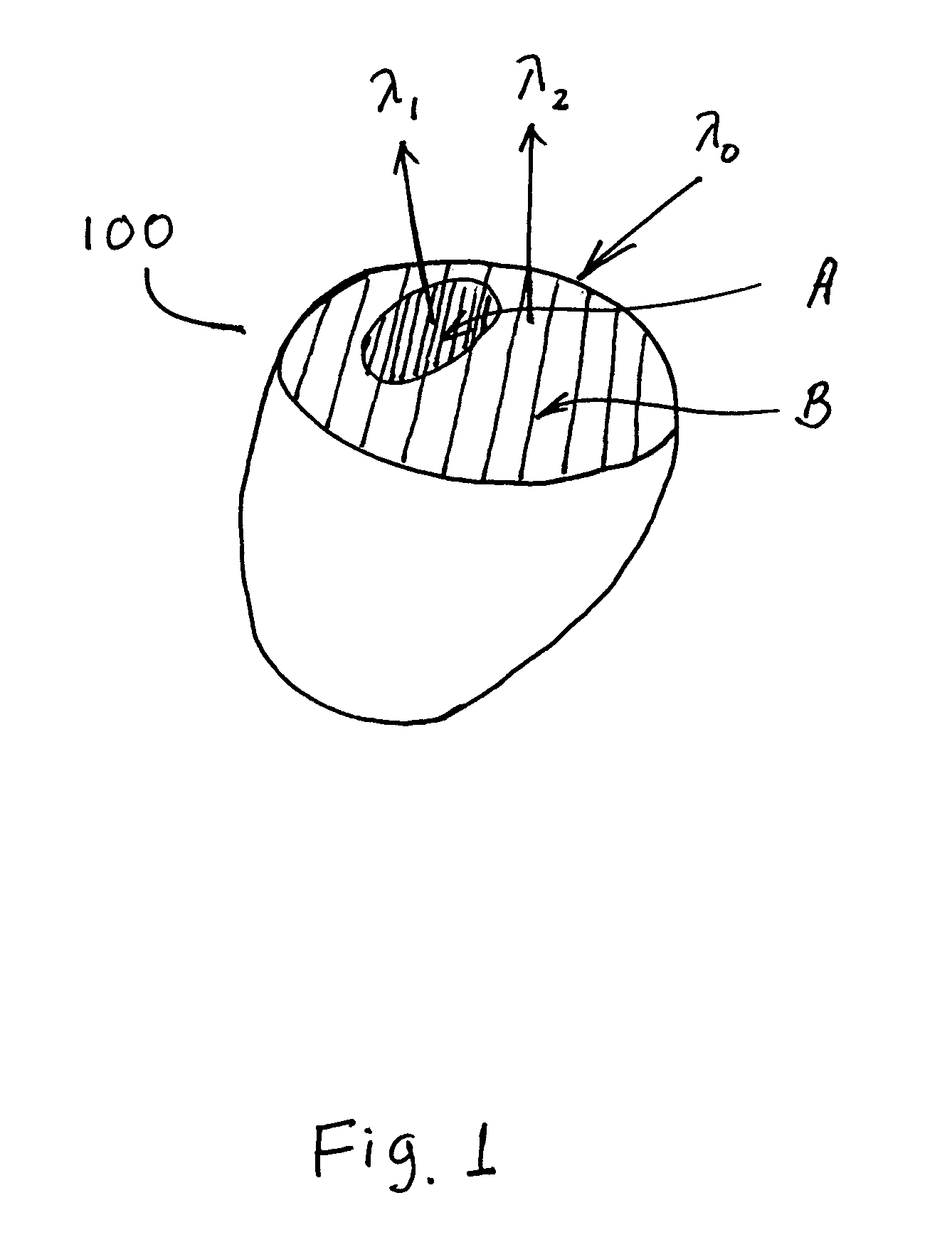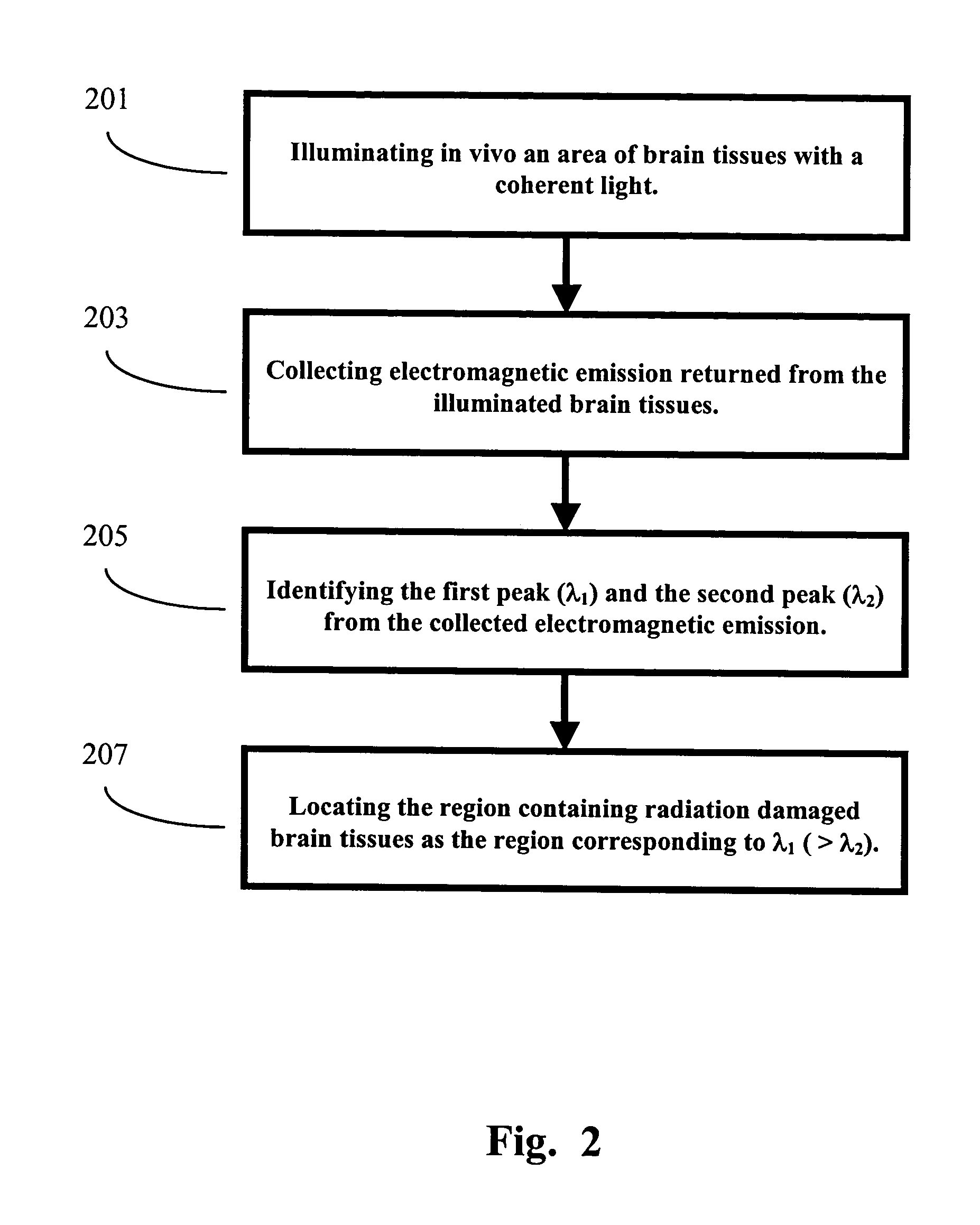Apparatus and methods of detection of radiation injury using optical spectroscopy
a radiation injury and optical spectroscopy technology, applied in the field of apparatus and methods of radiation injury detection using optical spectroscopy, can solve the problems of unable to differentiate between limited tissue specificity of ionizing radiation, and damage to both normal and neoplastic brain tissues
- Summary
- Abstract
- Description
- Claims
- Application Information
AI Technical Summary
Benefits of technology
Problems solved by technology
Method used
Image
Examples
Embodiment Construction
APPARATUS SETUP AND MEASUREMENT
[0048] Referring now to FIG. 3, in one embodiment of the present invention, an apparatus 300 includes a source of laser light 330, a fiber optical probe 340 coupled with the source of laser light 330 so as to deliver the laser light to a working end 342 of the fiber optical probe 340, and a spectrograph or spectroscope 360 coupled with the fiber optical probe 340 so as to receive fluorescent light emitted from in vivo brain tissues 100 contacted by the working end 342 of the fiber optical probe 340 and providing a frequency spectrum of the fluorescent light. The apparatus 300 further has a frequency amplitude detector 370 in the form of a CCD camera 372 with a camera controller 374, and a processor 380 in the form of a PC coupled with the spectrograph 360 through the detector 370 and programmed to analyze the frequency spectrum of light carried from the working tip of the probe 340 to the spectrometer 360 to distinguish between light returned to the sp...
PUM
 Login to View More
Login to View More Abstract
Description
Claims
Application Information
 Login to View More
Login to View More - R&D
- Intellectual Property
- Life Sciences
- Materials
- Tech Scout
- Unparalleled Data Quality
- Higher Quality Content
- 60% Fewer Hallucinations
Browse by: Latest US Patents, China's latest patents, Technical Efficacy Thesaurus, Application Domain, Technology Topic, Popular Technical Reports.
© 2025 PatSnap. All rights reserved.Legal|Privacy policy|Modern Slavery Act Transparency Statement|Sitemap|About US| Contact US: help@patsnap.com



